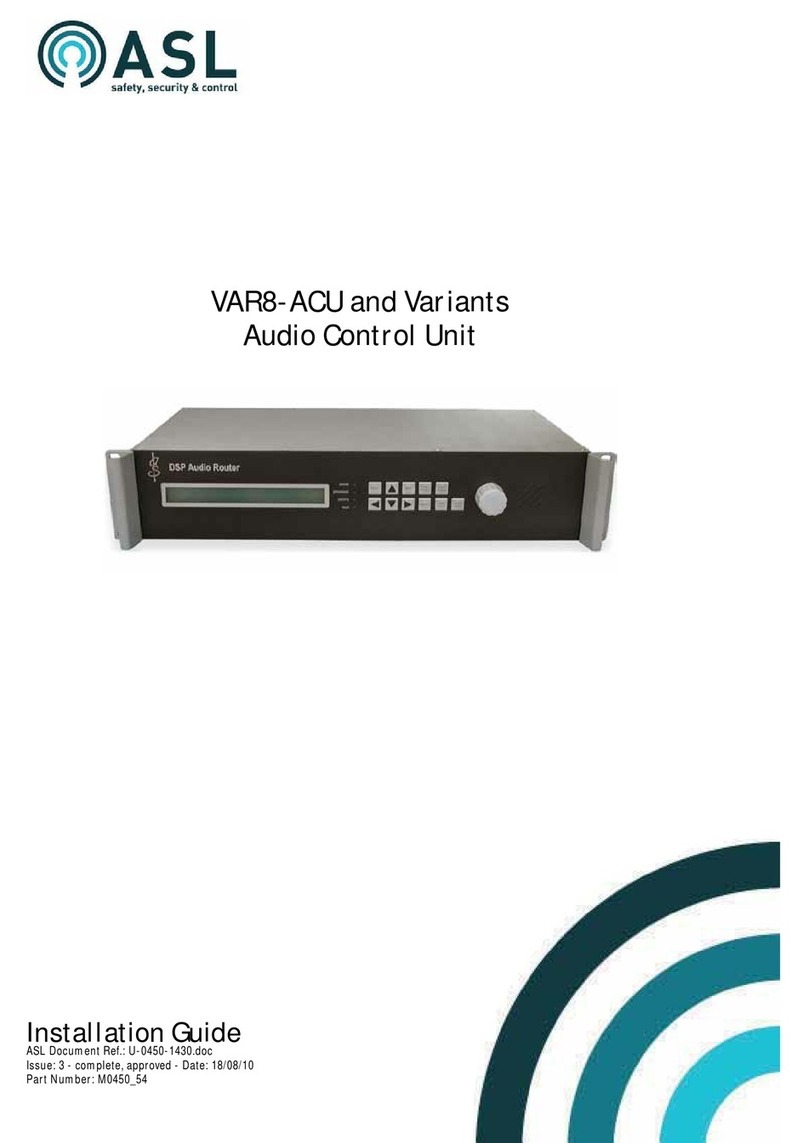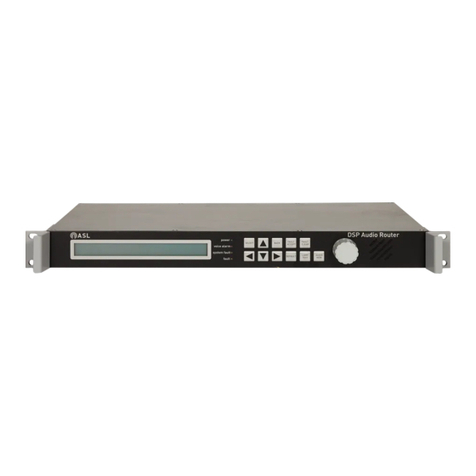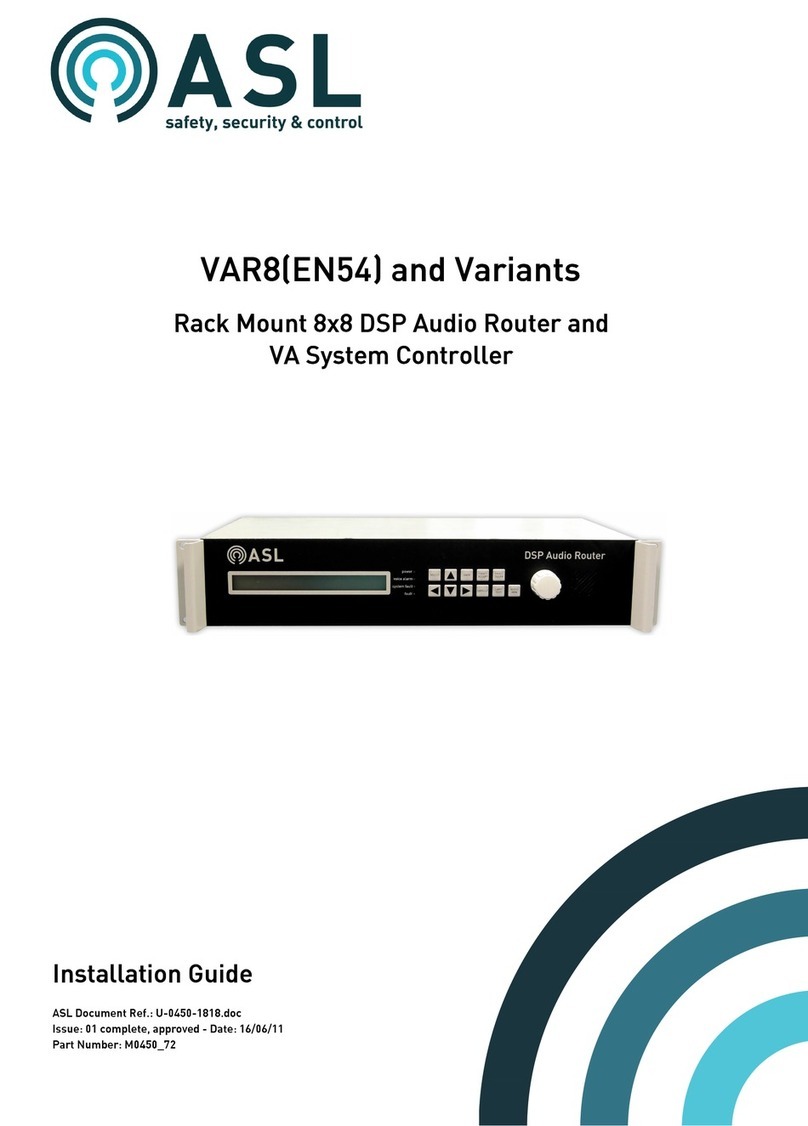VAR4 – Installation Guide
Issue: 02 complete, approved
Page 3 of 20
1 General Information
Technical Specification Summary
Supply Voltage Range ...................................................................................................................................... 18 to 40 V DC
Auxiliary DC Supply for External Equipment .................................................................................... 18 −36 V DC @ 100 mA
Current Consumption ................................................................... 400 mA @ 24 V DC supply (backlight on and sounder on)
350 mA @ 24 V DC supply (backlight off and sounder off)
Temperature (storage and operating) / Humidity Range .................................−5°C to +50 °C / 0% to 93% non-condensing
Dimensions (H x W x D) / Weight.................................... 44 mm x 436 mm x 222 mm (excl. handles and connectors) / 3 kg
Changeover Fault Relay........................................................................................................................... 1 (non-monitored)
Maximum Global Fault Relay Contact Current Rating .............................................................................................. 500 mA
Open-Collector Drive ....................................... 100 mA (2 x Speak Now LED / 2 x All Call LED / 2 x Remote Fault Outputs)
Analogue Input Interfaces................................................................................................................................................. 10
Non-monitored Mode Maximum External Fault Active-Low Input Voltage Threshold.............................................2.5 V
Monitored Mode Voltage Threshold ................................................................................... >3.7 V = Faulty: Open Circuit
0.8 V – 3.7 V = Healthy: Inactive
0.3 V – 0.8 V = Healthy: Active
<0.3 V = Faulty: Short Circuit
Digital Input Interfaces .......................................... 12 (opto-isolated with built-in resistor to suit voltages of +12 to +40 V)
Remote I/O Unit (BMB01) Interfaces................................................................................................................................... 3
Universal Microphone/Line Audio Inputs...........................................................................................................4 (balanced)
Background Music Line Audio Inputs.........................................................2 * stereo pairs (internally mixed) (unbalanced)
Audio Outputs ............................................................................................................ 4 (separate A and B outputs for each)
Built-in DVA Storage........................................................................................................4 (2 x 66-second & 2 x 50-second)
Hardware Bypass Fire Microphone Inputs........................................................ 2 (universal Microphone/Line Inputs 1 & 2)
Mixed Listen-in Monitoring Audio Output ........................................................................................................................... 1
Input Sensitivity and Impedance ..................................................................................... Line = −20 dBu (77 mV) @ Z≥10 kΩ
Mic = 770 µV @ Z≥10 kΩ
Music (phono) = Suits 1-2 V RMS units Z≥5 kΩ
Input Overload Margin ................................................................................................................................................. 40 dB
Input Attenuator Range.......................................................................................................................................0 to – 63 dB
Input Phantom Power ............................................................................................................................................... 12 V DC
Input Surveillance Tone ........................................................................................20 – 30 Hz (required level 0 to −40 dBFS)
Input Equalisation.....................................................................................................................3-band plus LF Cut / ±12 dB
Output Level and Impedance ..................................................................................................... 0 dBu (nominal) @ Z=660 Ω
Output Hard Limiter Threshold............................................................................................................................... +2.5 dBu
Output Surveillance Tone............................................. 30 Hz, 20 kHz, or mixed (30 Hz+20 kHz) / off, pulsed or continuous
Output Equalisation ..................................................................... 8-band / ±12 dB @ 125, 250, 500, 1 k, 2 k, 4 k, 8 k, 16 kHz
Number of Induction Loop Driven Output .................................................................................................................. up to 2
Gain Control Range ........................................................................................................................................ 0 dB to −63 dB
THD Input to Output ....................................................................................................................................... <0.1% @ 1 kHz
Crosstalk....................................................................................................................................................... >70 dB @ 1 kHz
Residual Noise .................................................................................................................................................... <78 dBu (A)
S/N Line ................................................................................................................................................................ >70 dB (A)
S/N Mic..................................................................................................................................................................>60 dB (A)
Frequency Response (input to output) .............................................................................................. 100 Hz to 20 kHz −3 dB































